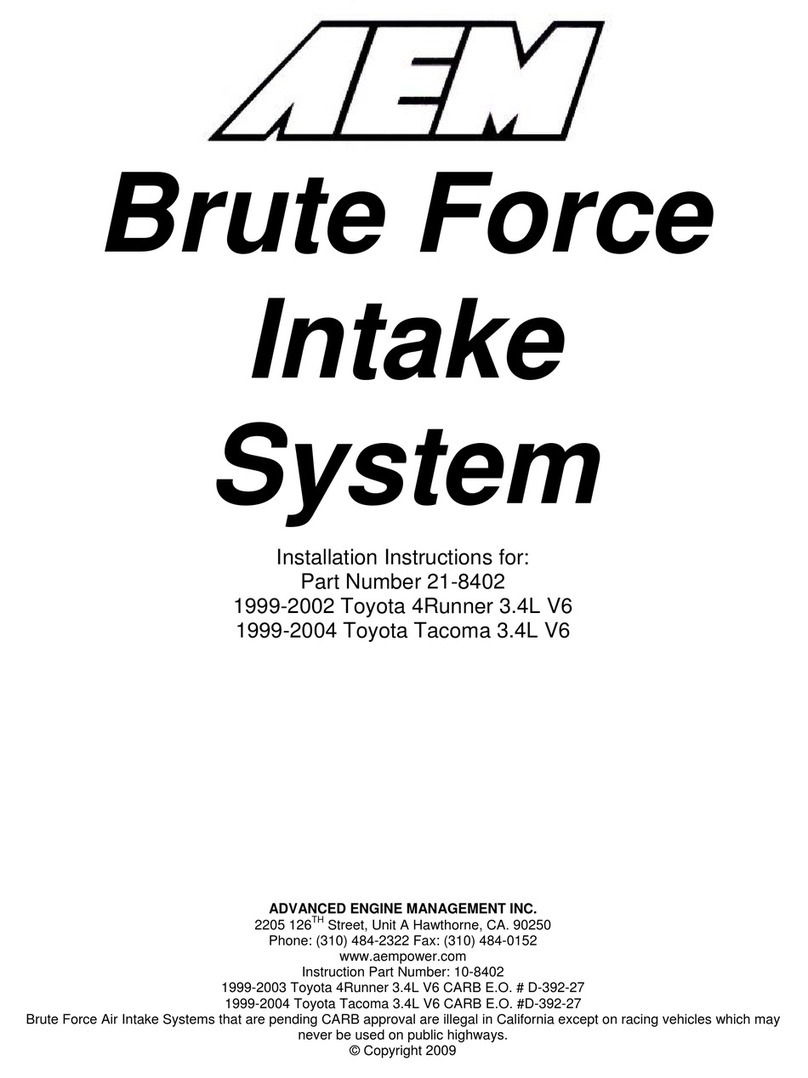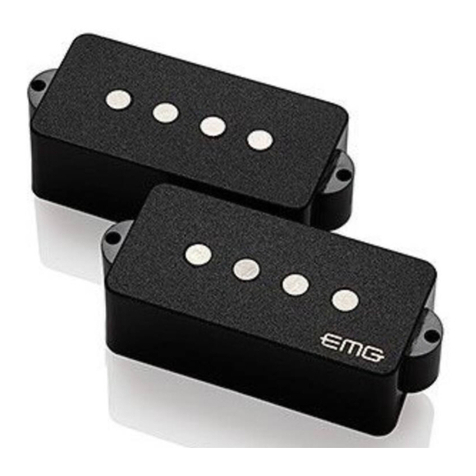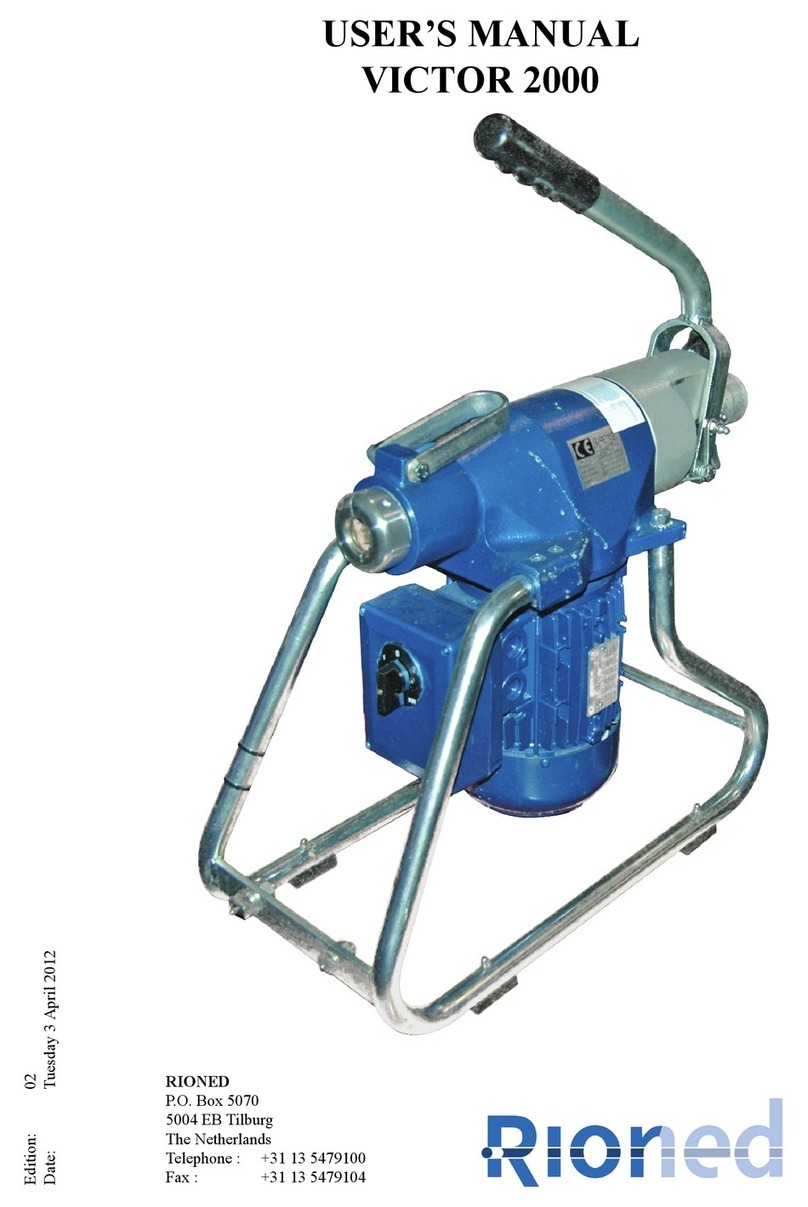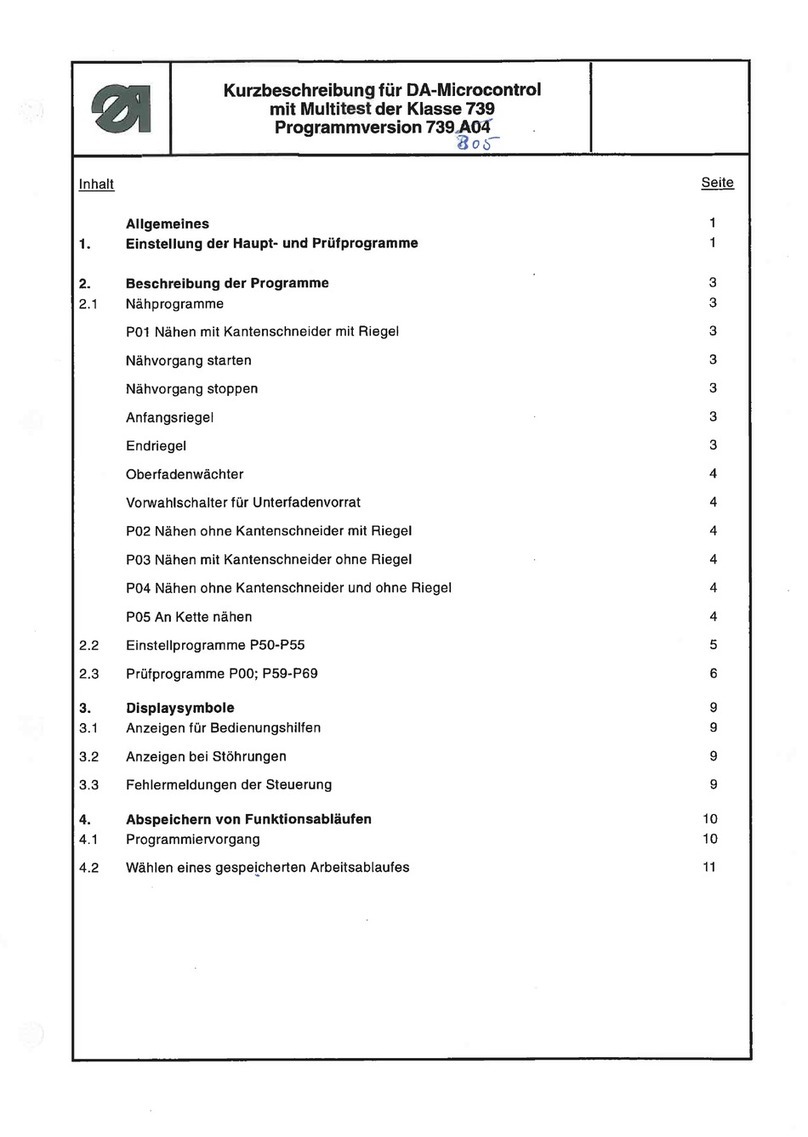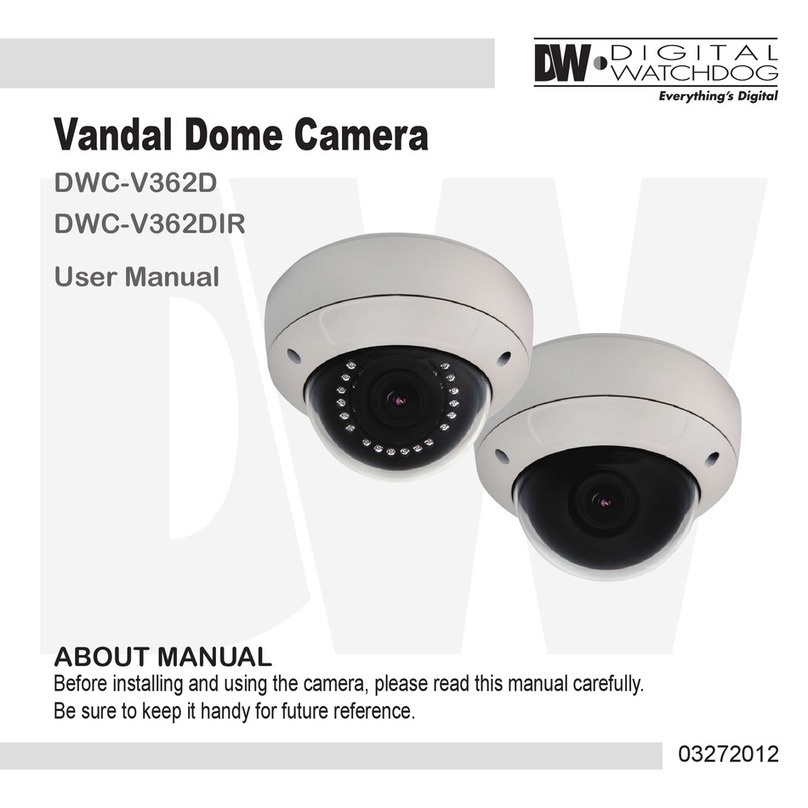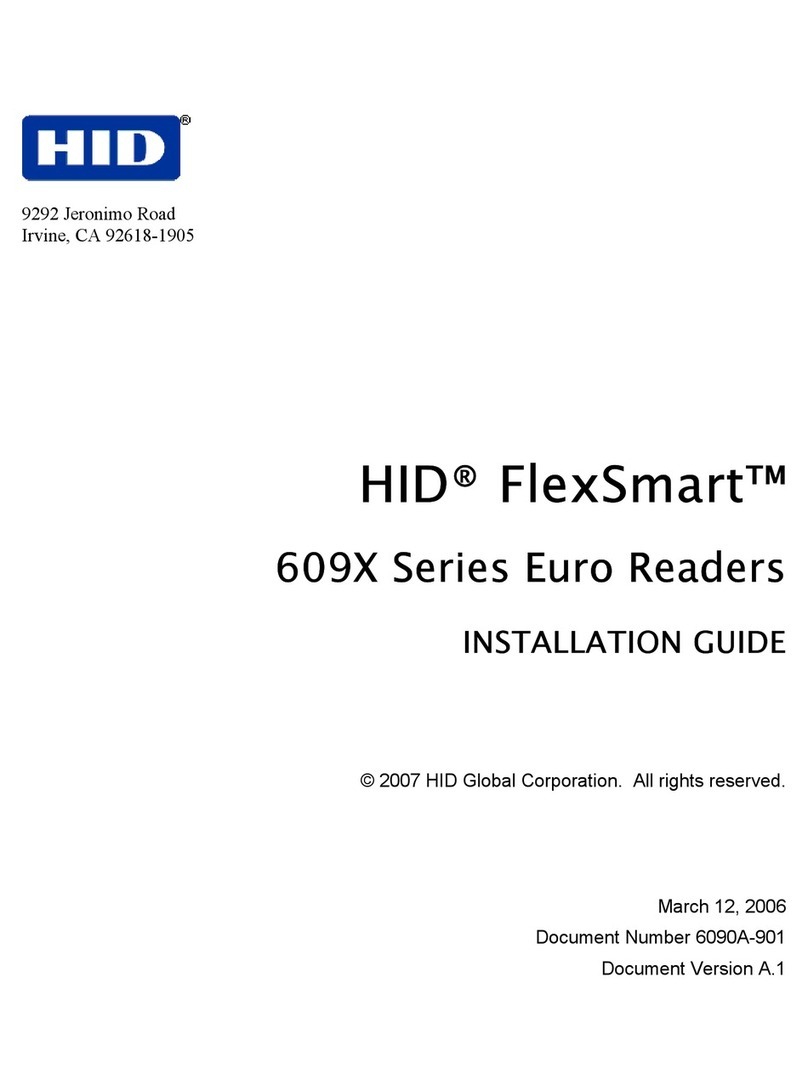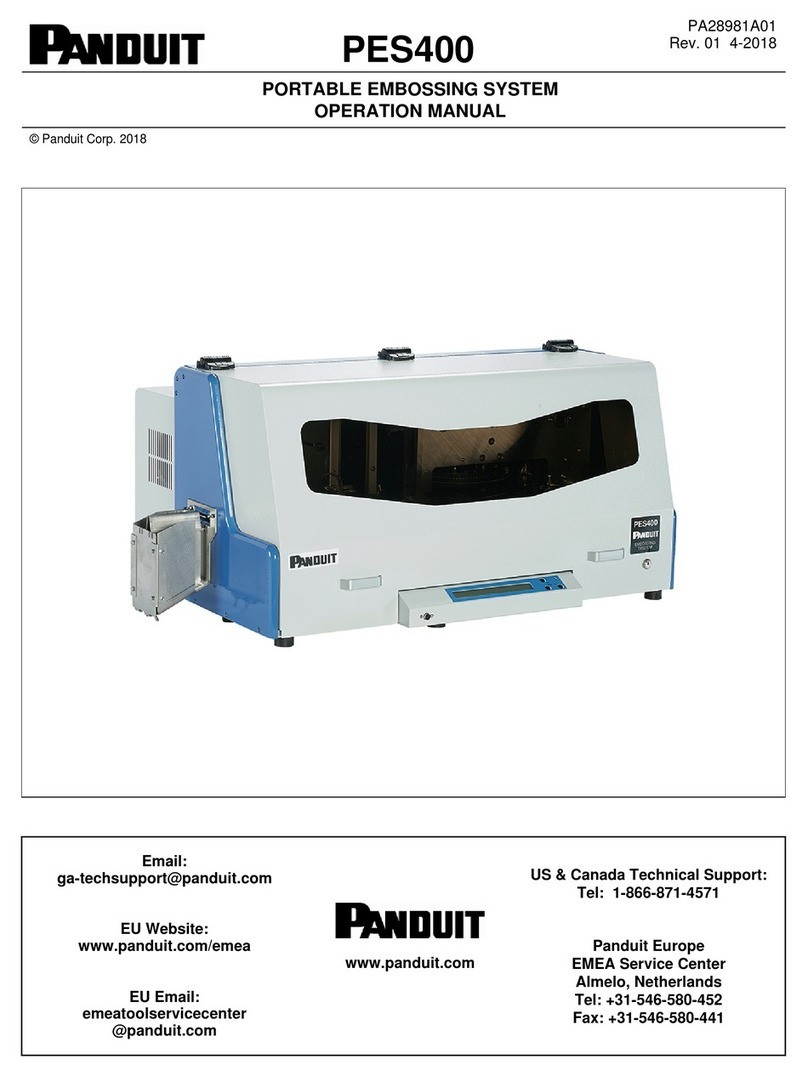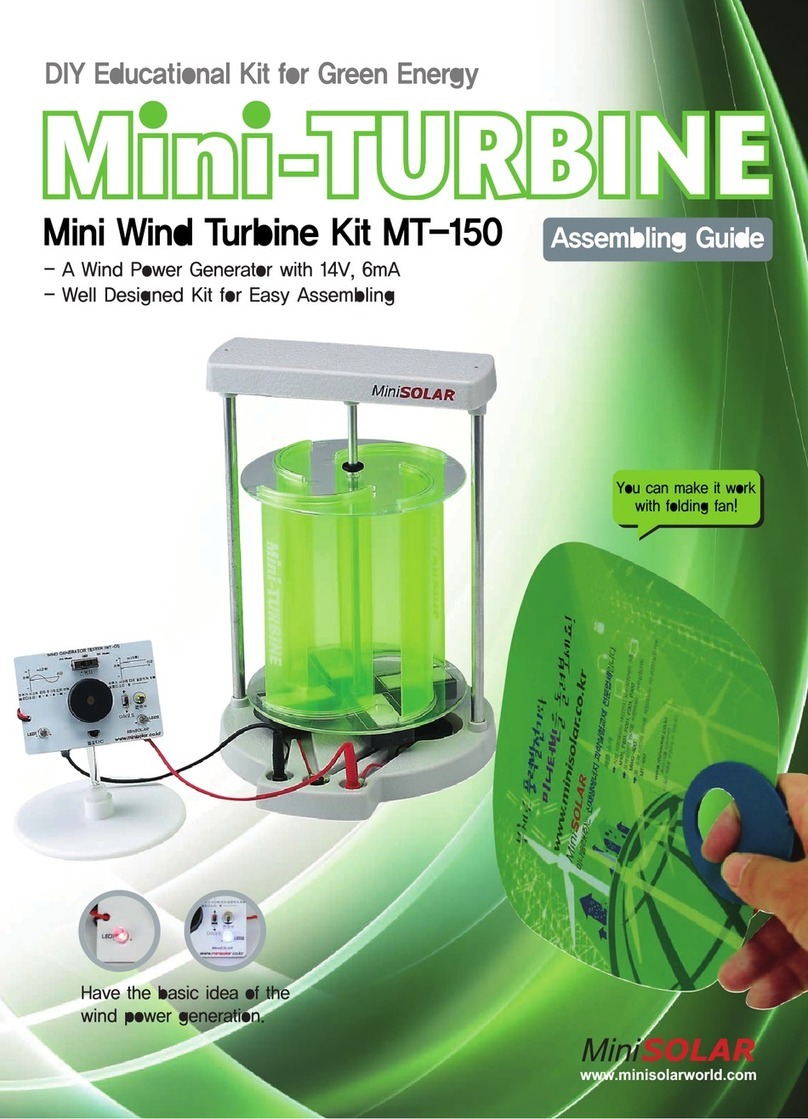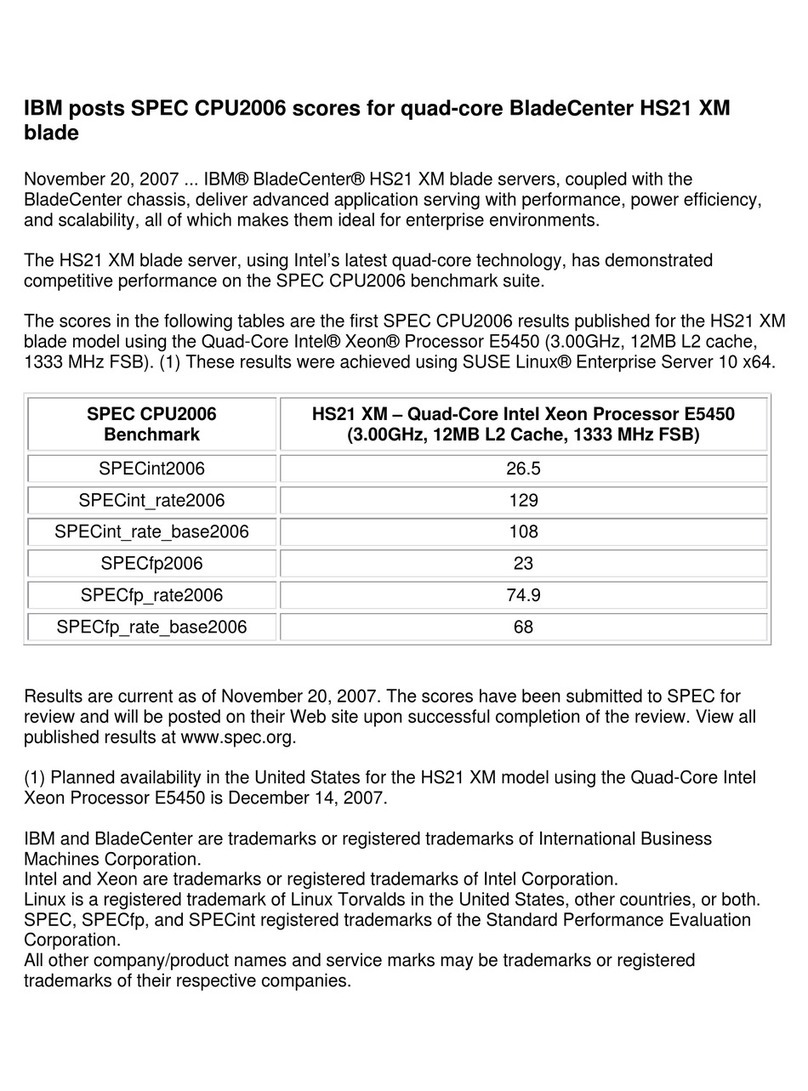Finest 701 User manual

Model 703 True RMS Multimeter
Model 701 Multimeter
USER’S
MANUAL
FINE INSTRUMENTS CORPORATION
FINE INSTRUMENTS CORPORATION
341-5, SONGNAE-DONG, SOSA-GU, BUCHON-SHI, KYUNGGI-DO KOREA
-TEL: (82-32) 656-8771~4 -FAX: (82-32) 656-5844
-E-mail: [email protected]
© Copyright 2001 Fine Instruments Corp. All right reserved.
Specifications subject to change without notice.
Litho in Korea.
a world leader in test & measurement

SOURCES LIKE SMALL HAND-HELD RADIO
TR ANSCEIVERS, FIXED STA TIO N RA DIO
AND TELEVISION TRANSMITTERS, VEHICLE
RA DIO TR ANSM IT TERS AND CEL LUL AR
PHONES GENERATE ELECTROMAGNETIC
RADIATION THAT MAY INDUCE VOLTAGES
IN THE TEST LEADS OF THE MULTIMETER.
IN SU CH CASES THE ACCURA CY O F T HE
MULT IMETER C ANNO T BE GUARAN TEED
DUE TO PHYSICAL REASONS.
WARNING!
Basic Specifications
DC Voltage : 0 to 1000 V
AC Voltage
703 (True RMS) : 15 mV to 1000 V (@ 40 Hz to 20 kHz)
701 : 0 to 1000 V (@ 40 Hz to 400 Hz)
Basic Accuracy : DC voltage – 0.5%
AC voltage – 0.75%
DC Current : 0 to 10 A (20 A for 30 seconds)
AC Current
703 (True RMS) : 20 µA to 10 A (20 A for 30 seconds)
701 : 0 to 10 A (20 A for 30 seconds)
Resistance : 0 to 40 M
Capacitance : 0.01 nF to 100 µF
Frequency : 0.5 Hz to 10 MHz
Duty Cycle : 0.1 % to 99.9 % for 0.5 Hz to 500 kHz
(pulse width > 2 µsec.)
Diode Test : 2.5 V
Continuity Check : Beep at Approx. < 10 (response time < 1 ms)
Temperature (703 only): –40 C to 1300 C (–40 F to 2372 F)
1. Safety Information 2
2. Electromagnetic Compatibility (EMC) 3
3. Controls and Indicators 4
4. Rotary Switch and Pushbutton Overview 7
5. Meter Operation 9
6. Maintenance 19
7. Specifications 20
Limited Warranty & Limitation of Liability
Warning
Read
Safety Information” before using this Meter.
1
CONTENTS

INTERNATIONAL ELECTRICAL SYMBOLS
AC (Alternating Current)
DC (Direct Current)
Either AC or DC
Caution! Refer to the explanation in this manual.
Caution! Dangerous voltage (Risk of electric shock)
Earth (Ground)
Double insulation or Reinforced insulation
Fuse
Not Applicable to Identified Model
Battery
The meters meet E N61326 : 1997
+
A
1
: 1998. See the
backside of
t
his
manual’s
cover page.
This manual contains information and warnings that must be followed for operating
the meter safely and maintaining the meter in a safe operating condition.
If
t
he meter is
not used in a
manner specified in this manual,
t
he protection
provided by the meter may be impaired.
The Model 703 and Model 701 comply wi
t
h IEC 1010-1 (1995), UL 3111-1 (6. 1994),
EN
61010-1 (1995), CSA C 22.2 No
,
1010.1 - 92
; Overvoltage 1000V
Category III.
TERMS IN THIS MANUAL
AWarning identifies conditions and actions that could pose serious hazards to the
user. A Caut
i
on iden
t
ifies conditions and actions that could
cause damage the
meter or the equipment under test.
Warning
Do not expose the meter to rain or moisture in order to reduce the risk of fire or
elec
t
ric shock. To avoid
any electrical shock hazard, observe
t
he proper
safety
precautions when working
with voltages above 60
V dc or 30V ac rms, these
vol
t
age
levels pose a poten
t
ial shock
hazard to
the user.
Inspect tes t lead s,
connectors and probes for damaged insulation or exposed metal before using the
meter. If any defects are found, replace them immediately. Do not touch test lead
tips or the
circui
t
being
t
ested while power is applied
to the circuit under
test.
Alway s keep your fingers behind
t
he finger guards of
the test leads during
measurement.
Do not measure any circui
t
tha
t
draws more than the
protection
fuse’s current rating
.
Do
not attempt the protection
fuse’s vol
t
age rating. Never
attempt a voltage measurement with the test lead inserted into
the mA µA
or
A
input terminal. When servicing the meter, use only
speci
f
ied replacement parts.
Remove test leads from the meter before you open the battery door. Do not operate
the me
t
er
with the battery
door removed or loosened. To avoid false readings,
which could result in possible electric shock or personal injury, replace the battery
as soon as the low battery indicator appears. Avoid working alone.
Caution
Dis connect
t
he tes
t
l eads from
the test points before changing
f
unct ions .
Disconnect circuit power and discharge
all high voltage capacitors before
testing
resistance, continuity, capacitance or diodes. Always set the meter to the highest
range
and
work downward for an
unknown value in the
manual ranging
mode.
Before measuring current, check
the meter’s
fuses and turn power OFF
to the
circuit before connecting the meter to the circuit.
1. SAFETY INFORMATION
2. ELECTROMAGNETIC COMPATIBILITY (EMC)
32

Although this manual describes the operation of both Model 701 and Model 703, all
illustrations and examples assume use of Model 703.
(1) 3-3/4 digit, 4000 count LCD display
(2) Push-buttons for special functions & features
(3) Selector to turn the power ON or OFF and select a function
(4) Input terminal for 10A (20A for 30 sec.) current measurement function
(5) Input terminal for milli-amps and micro-amps current measurement function
(6) Common (Ground reference) input terminal for all measurement functions
(7) Input terminal for all functions EXCEPT
current
(A, mA, µA) measurement
functions
Glossary of Terms for Digital Multimeters
Average sensing RMS calibrated
RMS (Root-Mean-Square) is the term used to describe the effective or equivalent
DC
value of
an AC signal. Most digit al mul
t
imeters use average sensing
RM
S
calibrated technique to measure RMS values of
AC signals. This technique is to
obtain the average value by
rectifying and filtering the AC
signal. The average
value is then scaled upward (that is, calibrated) to read the RMS value of a sine
wave. In measuring pure sinusoidal waveform, this technique is fast, accurate, and
cost effective. However, in measuring non-sinusoidal waveforms, significant errors
can be introduced because o
f
different
scaling
f
actors
relating average to RMS
values.
True RMS
True RMS is a term
which identifies
a DMM that ac curately responds to
t
he
effective RMS value regardless of the waveform shapes such as square, sawtooth,
triangle, pulse trains, spikes, and transient glitches as well as distorted waveforms
with the presence of harmonics.
(1)
(3)
(6)
(7)
(4)
(701)
(5)
(2)
(701)
3. CONTROLS AND INDICATORS
54

Non-sinusoidal waveforms may cause :
– Overheated transformers, generator and motors to burn out faster than normal
– Circuit breakers to trip prematurely
– Fuses to blow
– Neutrals to be overheated due to the triplen harmonics present on the neutral
– Bus bars and electrical panels to vibrate
Crest Factor
Crest Factor is the ratio of the Crest (instantaneous peak) value to the True RMS
value, which is commonly used to define the dynamic range of a True RMS DMM.
A pure sinusoidal waveform has a Crest Factor of 1.414.
A badly distorted sinusoidal waveform normally has a much higher Crest Factor.
NMRR (Normal Mode Rejection Ratio)
NMRR is the DMM’s ability to reject unwanted
A
C noise
effect which can cause
inaccurate DC measurements. NMRR is typically specified in terms of dB (decibel).
The Meter has a NMRR specification of > 60dB at 50Hz/60Hz, which means a good
ability to reject the effect of AC noise in DC measurements.
CMRR (Common Mode Rejection Ratio)
Common mode voltage is voltage existing on bo
t
h the COM and
Vo
l
tage input
terminals
of a DMM, with respect to ground.
CMRR is a DMM’s ability to rejec
t
common mode voltage e
f
fect which can cause digit rattle or of
f
set in voltage
measurements. The Meter has a CMRR specification of > 60dB at DC to 60 Hz in
AC volts measurement function and > 120 dB at DC, 50Hz and 60Hz in DC volts
measurement function.
Burden Voltage
Burden voltage is a voltage drop across the input terminals of a current-measuring
device, caused by internal shunt resistance.
Burden voltage contributes measurement error, and should be as low as practical.
Temperature Coefficient
Temperature Coe
f
ficien
t
is a factor used to calculate the change in indication or
output of an instrument with changes in temperature.
Uncompensated changes in temperature contribu
t
e uncertain
t
y
by an amount
determined by the temperature coefficient to instrument.
Turning the Meter On
To turn the meter on, turn the rotary switch from OFF to any switch setting.
Rotary Switch
Turn the meter on by selecting any measurement function. The meter presents a
s
t
andard
display
f
or
that
f
unc tion (range, meas ureme n
t
units , e
t
c.). Use the
SELECT button to select any rotary switch alternate function.
When you turn the rotary switch from one function to another, a display for the new
function appears
.
Button choices made in one function do no
t
carry over into
another function.
OFF. Turns the meter off.
. (Model 703). Volts ac rms and Volts dc.
.(Model 701). Volts ac.
. (Model 701). Volts dc.
. Access to resistance measurement, continuity test and diode test.
Hz (Duty).
Frequency measurement. Duty cycle is also displayed if it is toggled by
the Hz / Duty button.
CAP. Capacitance measurement.
Temp (Model 703 only).
Temperature measurement in
degrees Centigrade or
Fahrenheit. Changing the reading mode should be preset at the factory.
. Micro-amps ac rms and micro-amps dc measurements (Model 703).
Micro-amps ac and micro-amps dc measurements (Model 701).
.
Milli-amps ac rms and milli-amps dc measurements (Model 703).
Milli-amps ac and milli-amps dc measurements (Model 701).
4. ROTARY SWITCH AND PUSHBUTTON OVERVIEW
76

.Amperes ac rms and amperes dc measurements (Model 703)
Amperes ac and amperes dc measurements (Model 701)
Pushbuttons
The buttons
activate features tha
t
augmen
t
the
f
unction selected with the
rotary
switch.
RANGE.
Use
t
he RANGE
button to manually select a range.
Press and hold
RANGE button for two seconds to return the meter to auto range mode. The meter
is in auto range mode when
the AUTO indicator is on. The
RANGE selection
function is not available in Hz (Duty), CAP
, and
Temp modes.
The range and units are displayed on the LCD.
REL¡â .Use this button to set the meter to relative ( ) mode and make relative
measuremen
t
s
.
Rela
t
ive zero allows the user to o
f
fset the me
t
er
consecutive
measurements with
t
he displaying reading as the reference
value. Practically all
displaying readings can be set as relative reference value. Press the REL button
momentarily to activate and to exit relative zero mode.
Hz/Duty. Press this button to toggle between the Hz measurement mode and the
Duty measurement mode when the selector switch is set to Hz (Duty), and
.
HOLD. Press this button to turn hold
mode ON
and OFF. When the
hold mode is
activated, the meter beeps, freezes the display, and displays the D.H indicator on
the LCD. HOLD mode freezes the display for later view.
(Back
l
ight).
P
ress the HOLD (
) button for two seconds to turn the
backlight ON or OFF, when the HOLD function is simultaneously activated with the
D.H symbol on the display. Press the HOLD button momentarily again to activate
the Backlight function only.
SELECT. Press this button to toggle between the dc measurement mode and the
ac measurement mode when
the rotary selector switch is set
t
o (Model 703
only), , and . And also press this button to cycle through or or
measurement mode when the rotary selector switch is set to .
9
8
5. METER OPERATION
Voltage ( or , ) Measurements
Voltage is the difference in electrical potential between two points.
The polarity of ac (alternating current) voltage varies over time, while the polarity of
dc (direct current) voltage is constant over time.
function defaults at dc. Press SELECT button momentarily to select ac.
Range available in volts functions are :
400 mV, 4 V, 40 V, 400 V, and 1000V
When measuring voltage, the meter acts like a 10M (10 x 10
6
) impedance in
parallel with the circuit. This loading effect can cause measurement errors in high-
impedance circuits. In most cases, the error is negligible (0.1 % or less) if the circuit
impedance is 10 k or less.
Tips for measuring voltage
In 400
mV range, displayed value may
f
luc
t
uate
when disconnec
t
ing inpu
t
terminals. This is normal.
AC voltage measuring circuit in Model 703 is of root-mean-square (True RMS)
value system so the meter can accurately measure ac voltage of non-sinusoidal
waveforms including harmonics caused by various non-linear loads.

Tips for measuring resistance
Because the
meter’s test current flows through all
possible paths between the
test probe tips, the measured value of a resistor in a circuit is often different from
the resistor’s rated value.
The test leads can add 0.1 to 0.2
of error to resistance measurements.
To measure the resistance of the leads, touch the probe tips together and read
the resistance. If necessary, you can press the REL button to automatically
subtract this value.
The resistance function can produce enough voltage to forward-bias silicon diode
or transistor junctions, causing them to conduct.
Do not use the 40 M range for measuring the in-circuit resistance to avoid this.
When meas uring large resi s
t
ance, reading may be uns tabl e due to
environmentally induced elec
t
rical noise. In this case, directly connect
the
resistor to input terminals of the meter or shield the resistor at potential of the
COM input terminal to obtain stable reading.
For resistance above 1 M , the display may take a few seconds to stabilize. This
is normal for high resistance readings..
The meter has a circuit
t
o protect
t
he resistance range from over-voltage.
However, to prevent accidentally exceeding the protection circuit’s rating and to
ensure a correct measurement, NEVER CONNECT THE LEADS TO A SOURCE
OF VOLTAGE when the rotary switch is set to or or functions.
11
10
To improve the accuracy of dc voltage measurements taken in the presence of
ac voltages (such as, measuring the dc voltage of an amplifier in the presence of
an ac signal), measure the ac voltage first. Note the just measured ac voltage
range and select a dc voltage range
that
is the same or higher than the ac
voltage range. This method improves the dc voltage accuracy by preventing the
input protection circuits from being activated.
Resistance ( , , ) Measurements
(Ohms, Diode, and Continuity)
Resistance is an opposition to current flow. The unit of resistance is the ohm ( ).
The meter measures resistance by sending a small current through the circuit.
Ranges available in resistance functions are :
400.0 , 4.000 k , 40.00 k , 400.0 k , 4 M , and 40 M
Warning
To avoid the risk of electrical shock and instrument damage,
input voltages must not exceed 1000 V dc or ac (rms). Do not
attempt to take any unknown voltage measurement that may
be in excess of 1000 V dc or ac (rms).
Caution
To avoid damaging the me
t
er or
t
he equipment under test,
remove all power from the circuit and discharge all high-
voltage capacitors before measuring resistance.

Frequency (Hz) Measurements
Frequency is
the number of cycles a signal completes each second.
The meter
measures the frequency of a vol
t
age or current signal by counting the
number
of
times
t
he signal crosses a threshold level each second.
To measure the frequency of a vol
t
age or current signal,
press
t
he Hz/Duty
button
momen
t
arily while measuring volts or currents.
The available
f
requency ranges are 5 Hz, 50
Hz, 500 Hz
,
5 kHz, 50 kHz,
500 kHz,
5 MHz and 10
MHz.
Diode ( ) Test
Use
the diode tes
t
to check diodes, transistors
,
silicon con
t
rolled rectifiers (SCRs),
and
ot her semic onduct or dev ic es. T he
test s ends
a curr ent thr ough a
semiconductor junction, then measures the junc
t
ion’s voltage drop.
Normal
forward voltage drop (forward biased) for a good
silicon diode is between
0.4 V to 0.9 V. A reading higher than that indicates
a leaky (defective) diode. A
zero reading indicates a shorted (defective) diode.
An
indicates an open diode (defective).
Reverse
the test leads connect ions ( reverse
biased ) across
the diode.
The
display shows if the diode is good.
Any other readings indicate
the diode
is shorted or resis
t
ive ( defective )
.
Continuity
(
) Test
The continui
t
y
f
unction detects intermittent opens and shorts lasting as
little as
1
millisecond. These brief contacts cause
the meter to
emit a short
beep. This
f
unction is convenient for checking
wiring connections and
operation
of switches
.
A continuous beep tone indicates
a complete wire.
1312
Caution
Discharge all high-voltage capacitors before testing diodes.
Large value capacitors should be dis charged through an
appropriate resistance load.
Caution
Using resistance and continuity function in a live circuit will
produce false results and may damage the instrument.
In many cas es t he s u spic iou s c ompone nts mus t
be
disconnected from the circuit
under test to obtain accurate
results.

Tips for
measuring capacitance
Temperature (Temp) Measurements [Model 703 only]
Tips for measuring frequency
In frequency, the meter is always
autoranging.
When disconnec
t
ing the input
t
erminals
,
the overload sign may be displayed or
the display may unsteadily
fluctuate. This is typical.
Duty Cycle Measurements
Duty Cycle (or Duty Factor) is the percentage of time a signal is above or below a
trigger level during one cycle.
The duty cycle mode is optimized for measuring the ON or OFF time of logic and
switching signals. Systems such as electronic fuel injection systems and switching
power supplies are controlled by pulses of varying width, which can be checked by
measuring duty cycle.
Press the Hz/Duty button to toggle between the Hz mode and the Duty Cycle mode
when the rotary selector knob is set to Hz (Duty), , , , or .
Capacitance Measurements
Capacitance is the ability of a component to store an electrical charge.
The unit of capacitance is the farad (F). Most capacitors are in the nanofarad (nF)
to microfarad (µF) range.
The available capacitance ranges are 40nF, 400 nF, 4 µF, 40 µF, and 100 µF.
1514
Caution
To avoid damaging the meter or
the equipment under test,
remove all power from the circuit and discharge all high-
voltage capacitors before measuring capacitance.
Large value capacitors should
be discharged through an
appropriate resis
t
ance load. Use the
dc voltage
function
to
confirm that the capacitor is discharged.
In capacitance,
the Meter is always
autoranging.
In 40 nF r ange, the readings ar e
probably unstable due to envir on-
mentally induced elec
t
rical noise and
floating capacity of
the tes t leads .
Therefore
,
directly connect the object
to be measured
t
o the input
terminals.
The meter comes wi th temperatur e
reading in either Cen
t
igrade or
Fahrenheit
preset at
t
he fac
t
ory. The
reading mode
can be changed a
t
the
f
actory only.
The SELECT func
t
ion is
not available
in Temperature
mode.
WARNING - Do
not apply
thermocoupl e to circ uit s ex ceeding
30V rms , 42.4V pe ak or 6 0V d c .
Be
sure
to insert the banana plug K-type
temperature
bead probe TP7
with correct
+ – polari
t
ies.
You can als o us e a
thermocoupl e probe adapter T P 1 A
(O ptio nal purc has e ) t o adapt other
standard K-
t
ype temperature
probes.

1716
4. Turn
on power to the circuit
and
read the display.
5. After measuring current, turn off power to the
circui
t
and
discharge all high-
voltage
capacitors
.
Dis connec
t
the meter and restore the circuit to normal
operation.
Tips for measur ing current
When
measuring a 3-phase
system, special at
t
ention
should be taken to the
phase to phase voltage which is
significan
t
ly higher than the phase
t
o earth
voltage. To avoid exceeding the vol
t
age rating of the protecti on fus e(s)
accidentally, always consider the phase to phase voltage as the working
vol
t
age
for the protec
t
ion fuse(s).
When measuring current, the meter’s internal shunt resis
t
ors develop a vol
t
age
across the me
t
er’s terminals called “burden voltage”.
This voltage
drop may affect precision circuits or measurements.
Current (
,
,
)
Measurements
Current is
the flow of
electrons through a conductor. To measure current, you must
open
t
he circuit under test,
then
place the me
t
er
in
series with the circuit.
The available current ranges are :
400.0
µA, 4000 µA, 40.00
mA, 400.0
mA, 4.000
A, and 10.00 A
The
meter defaults a
t
dc. Press SELECT button momentarily to select ac.
To measure dc o
r
ac current,
1. Turn of
f
power to the circuit and discharge all high-voltage capacitors.
2.
I
nser
t
the black lead into
the COM terminal and the red lead in
t
o an
input
terminal appropriate for
t
he measurement range as the following table.
To avoid blowing the meter’s 440 mA fuse, use the mAµA terminal only if
you are sure the
current is less
t
han 400 mA.
3. Open the current path to
be tes
t
ed. Touch the red probe
t
o the more positive
side of the break and touch the black probe to the more negative side of the
break. (Reversing the leads will produce a negative reading, but will
not damage
the meter.)
Warning
Never a
t
tempt an in-circuit current measurement where the
open-circuit potential to earth is greater than 1000V. You may
damage the meter or be injured if the fuse blows during such
a measurement.
Caution
Check the meter
f
uses before measuring
current.
Use the
prope r t ermina ls ,
functi on,
and
ra nge for c urrent
measurements. Never
place the probes in parallel wi
t
h any
circuit or component when the test leads are plugged into the
current terminals.
Range RangesInput
mAµA
mAµA
10A
400.0 µA, 4000 µA
40.00 mA, 400.0 mA
4.000 A, 10.00 A
SERIES CONNECTION SER
I
ES CONN
E
CTION

1918
Auto / Manual Range Operation
Press the RANGE but
t
on momentarily to
selec
t
manual-ranging in volts, ohms,
and currents measurement
function
,
and
the meter will remain in
t
he range it was
in
,
when the LCD annuncia
t
or
AUTO turns off.
P
ress the bu
t
ton momentarily again to
step through the ranges
.
Press and hold the RANGE but
t
on for 2 seconds to resume
auto- ranging.
Manual-ranging fea
t
ure is not available in
Hz (Du
t
y), CAP, Temp,
and
functions.
Auto - Power - Off
The Auto-Power-Off feature automatically turns the meter off to extend battery life
after approximately 30 minutes
of no activities. To
t
urn on the meter after Auto-
Power-Off, turn the rotary switch from OFF to any function (ON).
Cleaning and Storage
Periodically wipe the
case with a damp cloth
and
mild detergent; do no
t
use
abrasives or solvents.
Clean the input terminals as follows :
1. Turn the meter off and remove all test leads.
2. Shake out any dirt that be in the terminals.
3. Soak a new swab with alcohol and work the swab around in each terminal.
If the meter is not to be used for periods of longer than 60 days, remove the battery
and store it separately.
Battery and Fuse Replacement
The meter uses a single standard 9V battery (NEDA 1604, JIS006P, IEC 6F 22), a
1000 V/440 mA IR 10 kA fast acting F fuse (F
71
) for mAµA current input, and a 1000
V/11A IR 10KA fast acting F fuse (F
72
) for A current input. The (F
71
) 440 mA, (F
72
) 11
A fuse must be replaced by qualified service personnel only.
Trouble Shooting
If
the meter fails to operate even wi
t
h the battery or fuse replacements, check it
twice over according to operating procedure as described in this manual.
If the meter’s V/ input terminal has subjected to high voltage transient (caused by
lightning or switching surge to the system) by
accident or abnormal operating
conditions, the series fusible resistors will be blown off like fuses in order to protect
the user and the meter. Most measuring functions through this terminal will then be
open circuit.
In this case, the series fusible resistors and the spark gaps should be replaced by
qual ified personnel. Refer to the LIMITED WARRANT
Y
& LIMIT
A
T ION OF
LIABILITY section for obtaining warranty or repairing service.
6. MAINTENANCE
Warning
To avoid electrical shock or personal injury, remove the test
leads and any input signals be
f
ore replacing the battery or
fuses. To prevent damage or injury, install only the same type
of fuses or equivalents.

2120
Safety & Compliances
Maximum voltage between any terminal
and earth ground
: 1000 V ac/dc
Compliances : Complies with CSA C22.2 No 1010.1-92,
ANSI/ISA-S82, 01-94 to 1000 V Overvoltage
Category lll.
Certifications : UL & cUL standard UL 3111-1 Listed
CE-marking certificated
Surge Protection : 8 kV peak per IEC 1010.1-92
Fuse Protection for mA or µA inputs : 1000 V / 440 mA lR 10 kA FAST fuse
Fuse Protection for A input : 1000 V / 11 A lR 10 kA FAST fuse
Physical Specifications
Display (LCD) : Digital – 4000 counts display;updates
5 times/sec.
Operating Temperature : 0 C to 40 C
Storage Temperature : –20 C to 60 C
Temperature Coefficient : nominal 0.15 x (specified accuracy) / C
@(0 C to 18 C or 28 C to 40 C),
or otherwise specified
Relative Humidity : 0 % to 80 % @ (0 C to 35 C)
0 % to 70 % @ (35 C to 40 C)
Altitude : Operating – up to 2000m
Storage – 10000m
Battery Type : Single 9V battery –NEDA 1604, JIS 006P or
IEC 6F 22
7. SPECIFICATIONS
Battery Life : 250 hrs. typical (with backlight off) [703]
750 hrs. typical (with backlight off) [701]
Shock Vibration : Per MIL-T-PRF 28800 for Class II instruments
Pollution Degree : 2
Electromagnetic
Compatibility (EMC) : Susceptibility – Commercial Limits for
EN 50082-1
Emissions – Commercial Limits for EN 50081-1
Size (H x W x L) : 40.5 x 92 x 172 mm
Weight : Approx. 386g
Warranty :
3 years
Calibration Interval : 1 year
Feature Summary
Backlight : For clear readings in poorly lighted areas
Fast Autoranging : Meter automatically selects the best range
momentarily
HOLD
:
Holds readings on display
Continuity / Open test : Beeper sounds
Battery/Fuse Access Door : battery or fuse replaceable without voiding
calibration
High-Impact Overmolded Case : Protective holster features

2322
Electrical Specifications
Accuracy is given as ± ([% of reading] + [number of digits]) at 18 C to 28 C with
relative humidity up to 80%, for a period of one year after calibration.
True RMS responding accuracies are specified
from 5% to 100% of range or
otherwise specified; Crest Factor < 3:1 at full scale and < 6:1 at half scale.
DC Voltage
NMRR : > 60dB @ 50/60 Hz
CMRR : > 120 dB @ DC, 50/60 Hz, Rs=1k
Input Impedance : 10 M , 30 pF nominal
(50 M , 100 pF nominal for 400 mV range)
AC Voltage
CMRR : > 60dB @ DC to 60 Hz, Rs = 1 K
Input Impedance
:
10 M , 30 pF nominal
(50 M , 100 pF nominal for 400 mV range)
*1: Accuracy for 400 Hz to 1 kHz
Range 701 703
Accuracy
400 mV 100 µV
0.5 % + 2 0.5 % + 2
4 V 1 mV
0.75 % + 3
40 V 10 mV
400 V 100 mV
1000 V 1 V 0.75 % + 3
Resolution
DC Current
AC Current
Resistance
Open Circuit Voltage : < 1.3 V dc
Range
40 Hz – 400 Hz 400 Hz – 10 kHz
Accuracy
701
703 703
400 µA 0.1 µA
4000 µA 1 µA
1.0 % + 5
40 mA 10 µA
400 mA 100 µA
4 A 1 mA
1.0 % + 5
1.5 % + 10
1.5 % + 10
2.0 % + 10
10 A 10 mA
1.5 % + 5
Resolution
Range 701 703
Accuracy
400 µA
4000 µA
1.0% + 2
40 mA
400 mA
4 A
10 A
0.1 µA
1 µA
10 µA
100 µA
1 mA
10 mA
1.0% + 2
1.5 % + 5 1.5 % + 5
Resolution
Range
40 Hz – 400 Hz 400 Hz – 1 kHz 1 kHz – 20 kHz
Accuracy
701 703 703
400 mV 100 µV
4 V 1 mV 0.75 % + 3
40 V 10 mV
400 V 100 mV
1000 V 1 V 1.0% + 5 1.0 % + 5 2.0% + 5 *1–
0.75 % + 3
2.0 % + 3
Resolution
Range 701 703
Accuracy
400 0.1 1.0 % + 5 1.0 % + 5
1.5 % + 10 1.5 % + 10
1.0 % + 5
1.0 % + 5
4 k 1
0.5 % + 340 k 10
400 k 100
4 M 1 k
40 M 10 k
0.5 % + 3
Resolution
2.0 % + 10 2.0 % + 10

Continuity
Diode Test
Capacitance
*
1
. Accuracy with film capacitor or better
Using
Mode
Frequency and Duty Cycle
25
Temperature (Model 703 only)
* This specification is effective at the ambient temperature of 23 C (73.4 F) only.
Frequency Counter Sensitivity
Burden Voltage ( A, mA, µA)
24
Remark
Accuracy
701 703
Minimum frequency :
0.5 Hz
Sensitivity :
5 Hz–1 MHz, > 250 mV
1MHz–10MHz, >350 mV
0.001 Hz
0.01 Hz
0.05 % + 3
0.05 % + 3
0.1 Hz
1 Hz
10 Hz
Range
5 Hz
50 Hz
500 Hz
5 kHz
50 kHz
500 kHz 100 Hz
5 MHz 1 kHz
10 MHz 10 kHz
0.1%
0.5 Hz to 500 kHz (pulse width > 2 µsec.)
(0.1% + 0.05% per kHz + 1 count) for 5 V input (Logic signals only)
0.1% to
99.9%
Resolution
Function
Burden Voltage (typical)
mA / µA
Range
400 µA
4000 µA
40 mA
400 mA
4 A
10 A
150 µV / µA
150 µV / µA
3.3 mV / mA
3.3 mV / mA
0.03 V / A
0.03 V / A
10 A
Range Accuracy Open Circuit Voltage
4V 2%
Test Current
(Typical)
0.25 mA < 1.5 V dc
Audible threshold : the beeper sounds if the measured resistance is lower than
10 , and turns off when greater than about 60 .
Response time : < 1 msec.
Range 701 703
Accuracy
*
1
2.5 % + 10 2.5 % + 10
40 nF 10 pF
400 nF 100 pF
4 µF 1 nF
40 µF 10 nF
100 µF 100 nF
Resolution
Range Accuracy
- 40 C to -10 C
(-40 F to 14 F)
Resolution
1 C
1 F
3% ± 5 C
(3% ± 5 F)
- 10 C to 400 C
(14 F to 752 F)
1 C
1 F
1% ± 3 C
(1% ± 3 F)
400 C to 1300 C
(752 F to 2372 F)
1 C
1 F
3% of reading
(3% of reading)
Range Minimum Sensitivity ( RMS Sine Wave )
V
(4 V to 1000 V) 500 mV
40 Hz to 10 kHz 40 Hz to 20 kHz
500 mV
µA
(400 µA to 4 mA) > 15 % F.S. of AC range Not Specified
mA
(40 mA to 400 mA) > 15 % F.S. of AC range
Not Specified
A
(4.0 A to 10 A) > 45 % F.S. of AC range Not Specified
*
1

LIMITED WARRANTY & LIMITATION OF LIABILITY
Fine Instruments Corporation (Finest) warrants this product to be free from defects
in material and workmanship under normal use and service for 3
years.
This
warran
t
y
extends only
to the original buyer or end-user customer of a Finest
authorized reseller, and is not applied to fuses, battery or to any product which, in
Finest’s option, has been misused, altered, neglected or damaged by accident or
abnormal conditions of operation or handling.
Finest warrants that sof
t
ware will operate on appropriate Fines
t
ins
t
ruments
substantially in accordance with its functional specifications for 90 days and that it
has been properly recorded on non-defective media. Finest does not warrant that
software will be error free or operate without interruption.
Finest authorized resellers shall extend this warranty on new and unused products
to end-user customers only but have no authority to extend a greater or different
warranty on behalf of Finest.
Finest’s warranty obligation is limited, at Finest’s option, to refund of the purchase
price
,
or
free of charge repair or
replacement of a defec
t
ive
product which is
returned to the Finest’s factory within the warranty period.
To obtain warranty service, contact your nearest Finest authorized reseller or send
the product, with a description of the difficulty, postage and insurance prepaid (FCA
Destination), to the nearest Finest authorized reseller. Finest assumes no risk for
damage in transit. Finishing warranty repair, the product will be returned to Buyer,
transportation prepaid (FCA Destination). If Finest determines that the failure was
caused by misuse, accident
,
abnormal condition of operation / handing, or
alteration, Finest will provide an estimate of repair costs and obtain authorization
before commencing the repair work. Finishing repair, the product will be returned to
the
B
uyer
transportation
prepaid and the Buyer will be billed
f
or
t
he repair and
return transportation charges (FCA shipping Point).
Warranty service is available outside the Republic of
K
orea only if product was
purchased through a Finest Authorized Sales Outlet in the country of use. Finest
reserves the right to invoice Buyer for importation costs of repair/replacement parts
when product purchased in one country is submitted for repair to the Finest factory
in the Republic of Korea.
DISCLAIMER
THIS
WARRANTY
I
S IN
LIEU OF
ANY OTHER WARRANTIES,
EXPR
E
SSED
O
R
IMPLIED, INCLUD
I
NG ANY WARR
A
NTY OF MERCHANTABILIT
Y
ORFITNE
S
S FOR
A PARTICULAR PURPOSE.
FINEST SH
A
LL NOT
BE LIABLE FOR ANY SPECIAL
,
INDIR
E
CT, INCIDENTAL OR CONSEQUENTI
A
L D
A
MAGES OR LOSSE
S
,
INCLUDING LOSS OF DATA, WHETHER AR
I
SING FROM BREACHOF WARRANTY
ORBA
S
EDONCONTRACT
,
TORT,RELIANCE ORAN
Y
OTHERTHEOR
Y
.
This manual suits for next models
1
Table of contents
